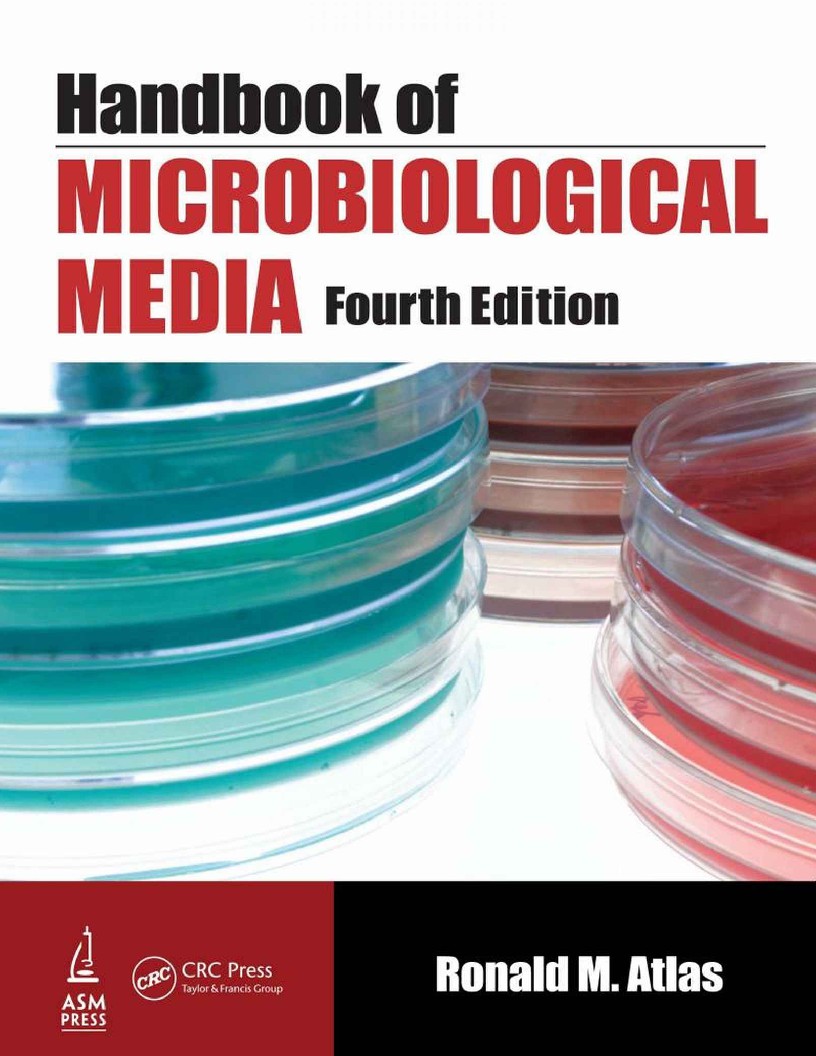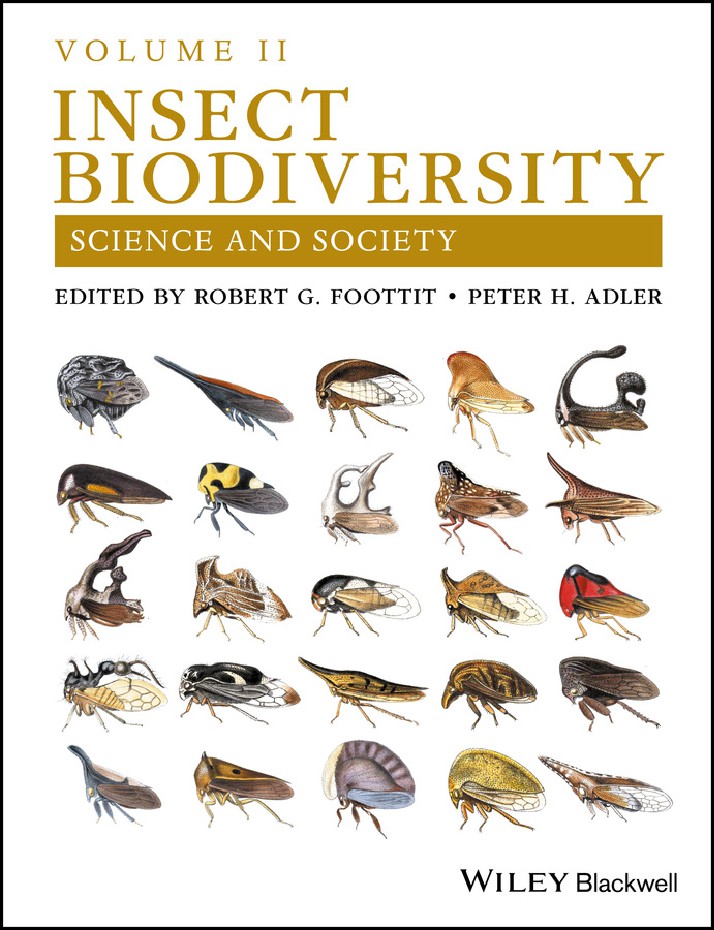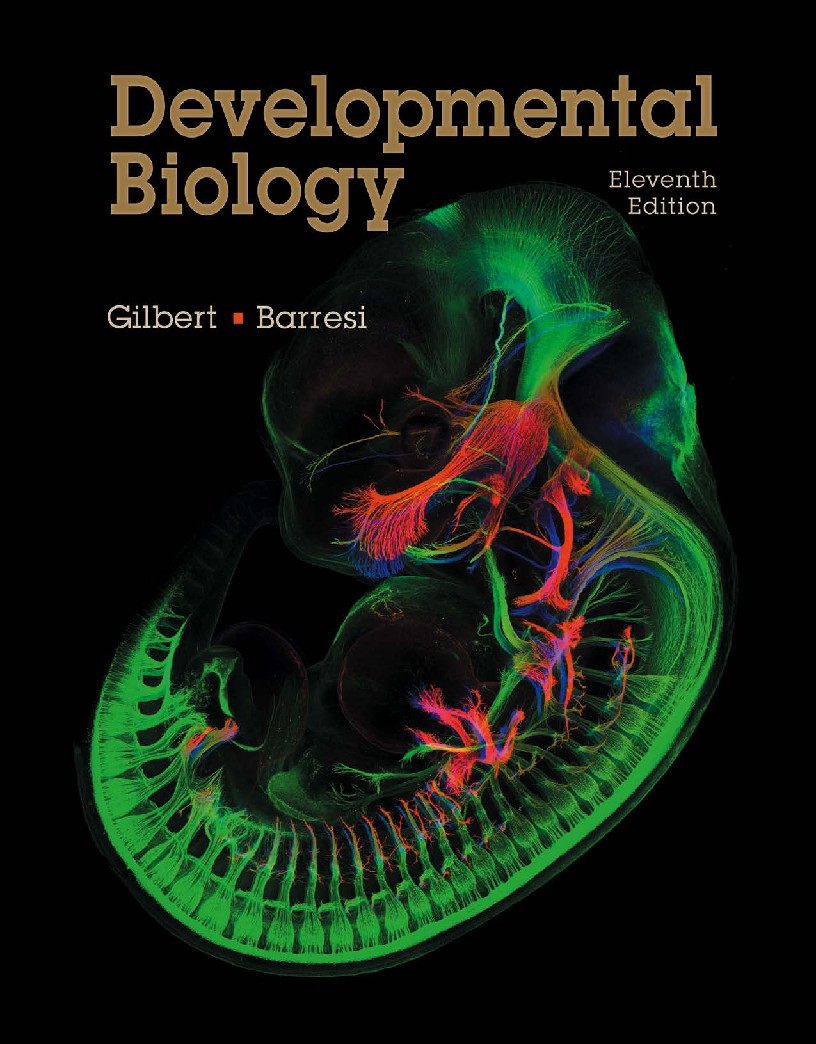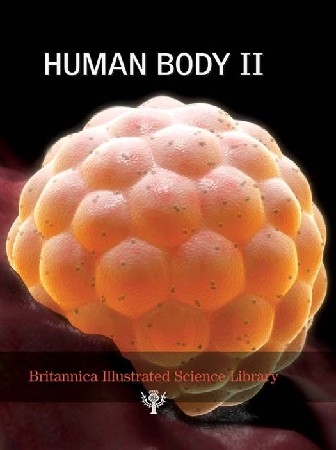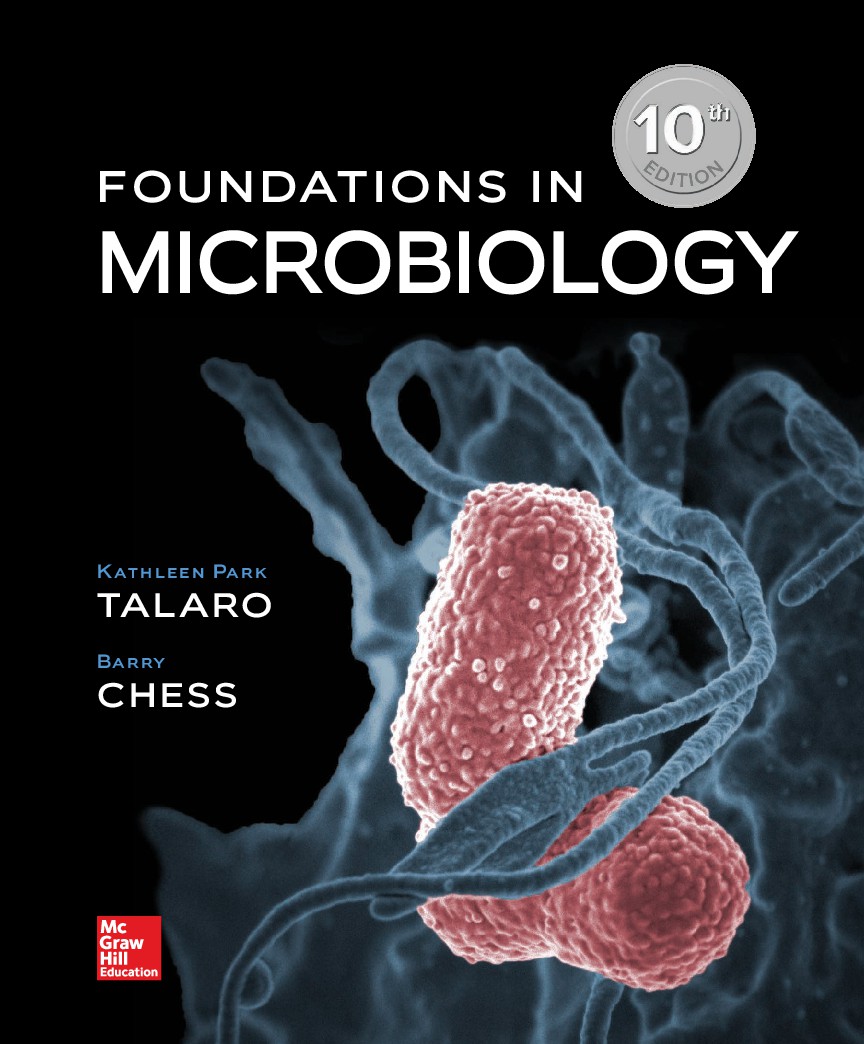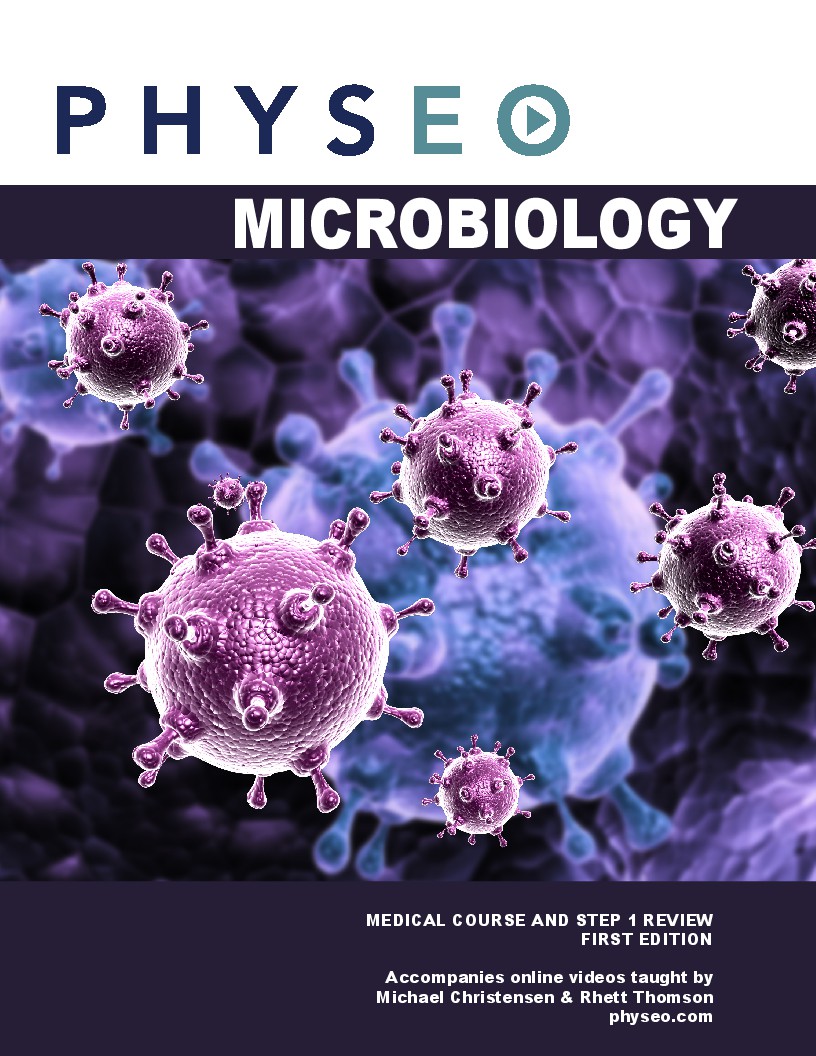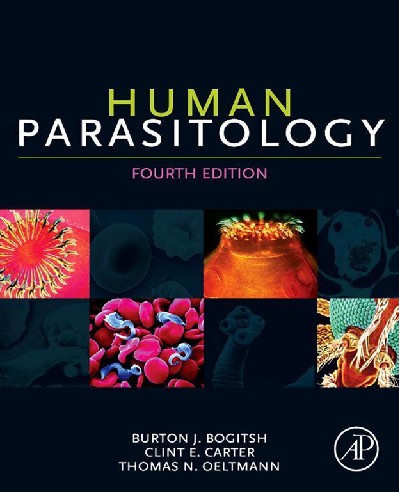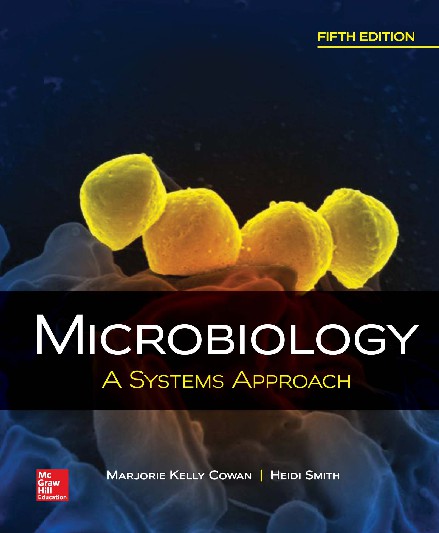Book Details
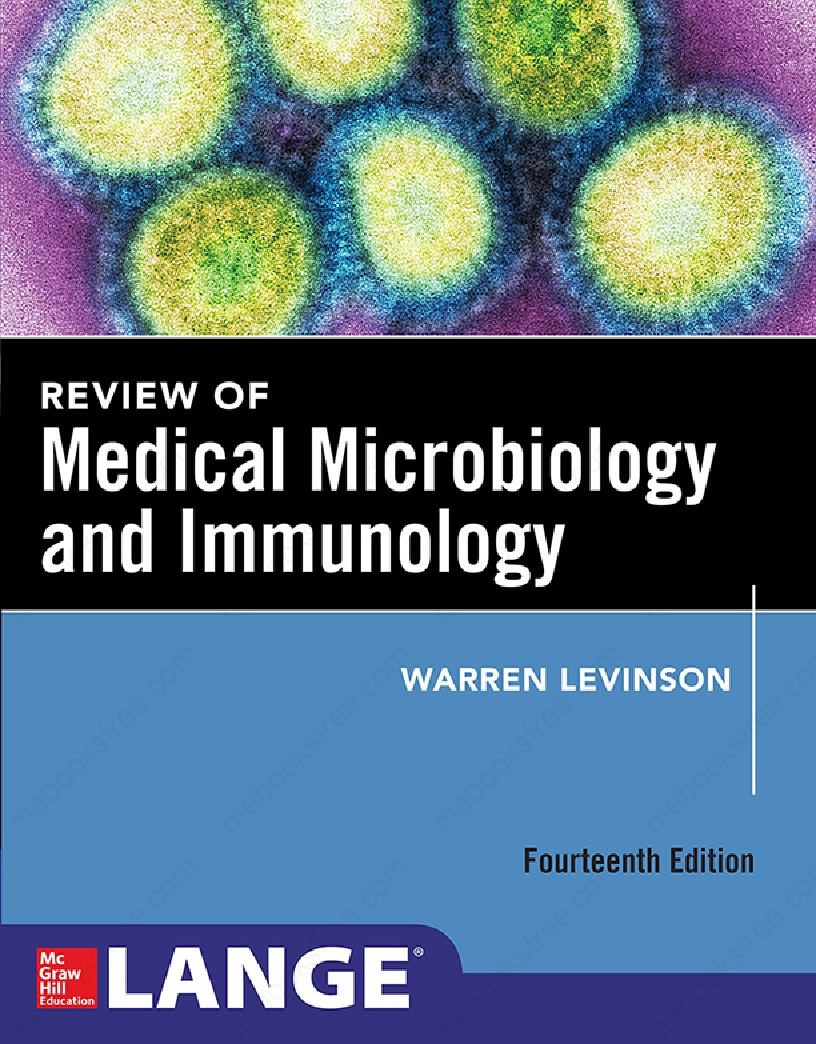
Review of Medical Microbiology and Immunology
1. CHAPTER CONTENTS: The main headings in each chapter
are listed so the reader can determine, at a glance, the
topics discussed in the chapter.
2. TEXT: A concise, complete description of medically important
information for the professional student. Includes basic
and clinical bacteriology (pages 1-225), basic and clinical
virology (pages 226-396), mycology (fungi) (pages 397-422),
parasitology (pages 423-448), immunology (pages 489-584),
and ectoparasites (pages 585-592).
The text also includes nine chapters on infectious diseases.
These chapters include Bone and Joint Infections
(pages 593-597), Cardiac Infections (pages 598-604),
Central Nervous System Infections (pages 605-613),
Gastrointestinal Tract Infections (pages 614-621), Pelvic
Infections (pages 622-628), Upper Respiratory Tract Infections
(pages 629-634), Lower Respiratory Tract Infections (pages
635-640), Skin and Soft Tissue Infections (pages 641-648), and
Urinary Tract Infections (pages 649-652).
3. SUMMARIES OF ORGANISMS: A quick review for
examinations describing the important characteristics of
the organisms (pages 653-690).
4. SELF-ASSESSMENT QUESTIONS: USMLE-style questions
with answers are included at the end of the chapters.
5. PEARLS FOR THE USMLE: Eleven tables containing
important clinical and epidemiologic information that
will be useful for answering questions on the USMLE
(pages 701-708).
6. USMLE-TYPE QUESTIONS: 654 practice questions that
can be used to review for the USMLE and class examinations
(pages 709-750).
7. USMLE PRACTICE EXAM: Two 40-question practice
examinations in USMLE format (pages 751-760).
8. PEARLS: Summary points at the end of each basic science
chapter.
9. CLINICAL CASES: 50 cases describing important infectious
diseases with emphasis on diagnostic information
(pages 691-700).
10. CLINICAL IMAGES: More than 100 images of clinically
important lesions illustrate the text. Additional clinical lesions
can be seen on the McGraw-Hill Online Learning Center’s
Web site (www.langetextbooks.com/levinson/gallery/).
Author: Warren Levinson, MD, PhD
Pages: 832
Issue By: James Publication
Published: 3 years ago
Likes: 0

